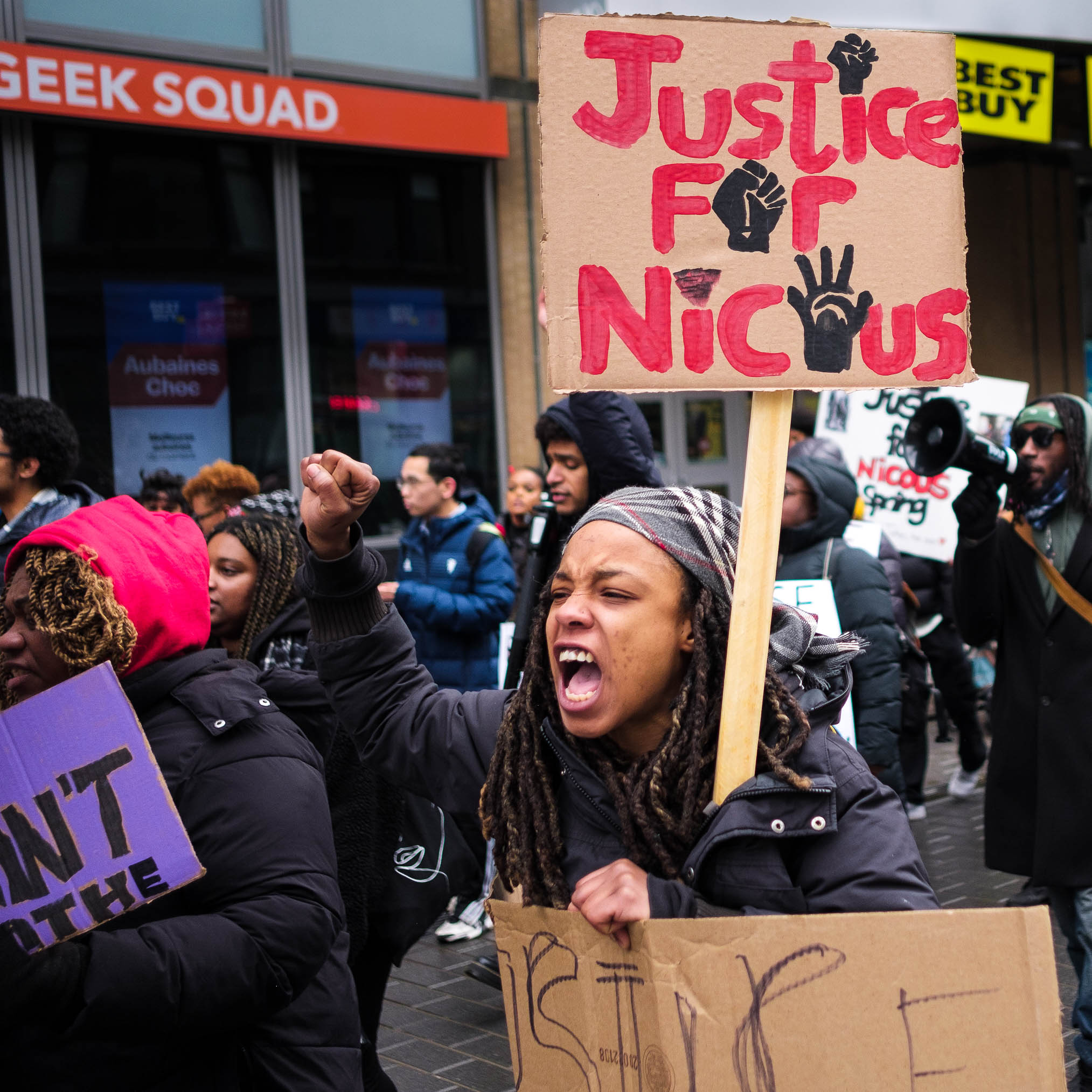On Friday, February 10th, a protest march through downtown Montreal was organized by the family and community of Nicous D’André Spring, an up-and-coming rapper and avid boxer from Montreal who was killed by prison guards in the Bordeaux Prison of Montreal. His family is demanding justice and answers surrounding the 21-year old’s illegal detainment and murder, no official reports or video footage have been released by the prison in the two months that have passed since Spring’s death on December 24th.
Spring was brought into Bordeaux on December 20th following his arrest by Montreal police, and the reason for his arrest has not been released publicly. He made bail on the 23rd, but was denied release along with two other inmates, who were all illegally detained until the following day on Christmas eve – when the deadly intervention took place. The complete lack of transparency around the events that led to Spring’s death has left his family and community in the dark, forcing them to take things into their own hands.
The family, along with community organizers have formed the Justice for Nicous Spring Action Committee, which has taken up legal action. Some of their demands are: citizen involvement in the coroner’s inquiry, the release of video footage of the intervention, and criminal charges for the prison officers involved – two of whom were suspended. Stephen Hennessy, a mentor to Spring and community worker in the neighbourhood of Notre-Dame-De-Grâce (NDG), spoke to North Star about what justice should look like.
Anonymous accounts from Bordeaux correctional officers themselves paint a disturbing picture of the intervention that led to Spring’s death. It involved 10 officers, who used a spit hood – a device to prevent someone from spitting on or biting law enforcement officers – on Spring and then pepper-sprayed him twice with the hood still on. David Austin, a member of the Action Committee, described this as “The equivalent of being waterboarded… in any other context, that is considered a form of torture. Inadvertent or not.”
Waterboarding is a torture method that was used in apartheid South Africa and Nazi concentration camps, where water is poured through a cloth covering a victim’s airways, creating a sustained drowning sensation. Ed Budge, a lawyer at the Seattle firm Budge & Heipt, who focuses on cases involving police brutality, told North Star that combining spit hood and fluids is “the difference between breathing through a dry t-shirt and one that is soaked in mucus and pepper spray.”
Ed continues: “When somebody gets pepper sprayed, what do they want to do? The natural reaction is to try and get it out of their airways, to spit and blow out their nose. Law enforcement sometimes take that as a threat and their response will be to use a spit hood. But this starts a vicious cycle; where pepper spray residue builds up in the hood, causing more fluid production, which saturates the hood, which decreases permeability, preventing air from passing through, causing breathing difficulties, and then suffocation.”

Be part of the conversation!
Only subscribers can comment. Subscribe to The North Star to join the conversation under our articles with our journalists and fellow community members. If you’re already subscribed, log in.